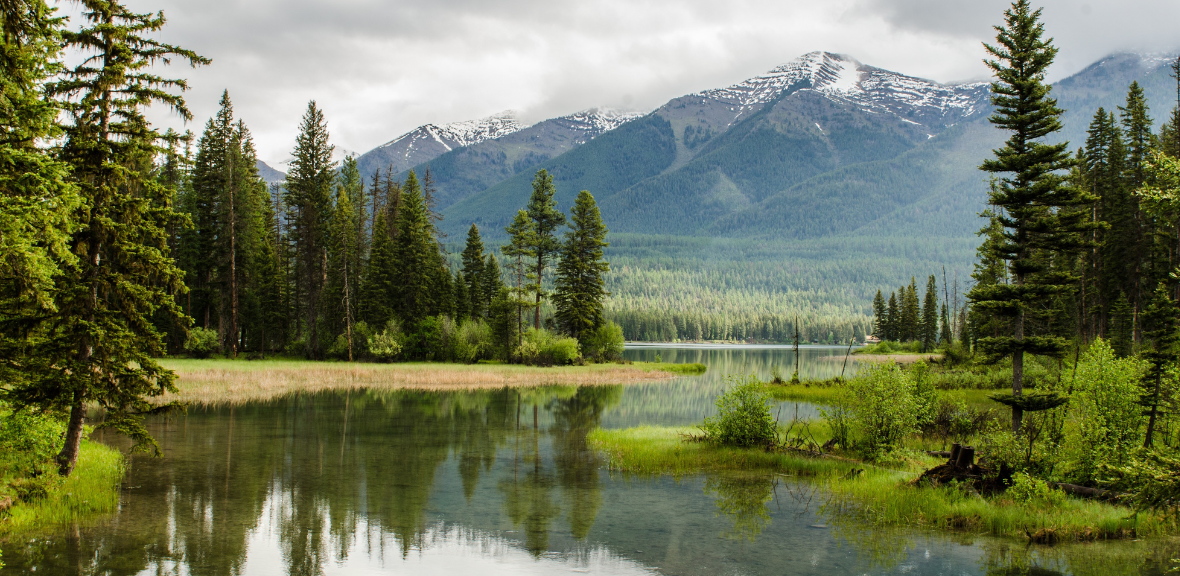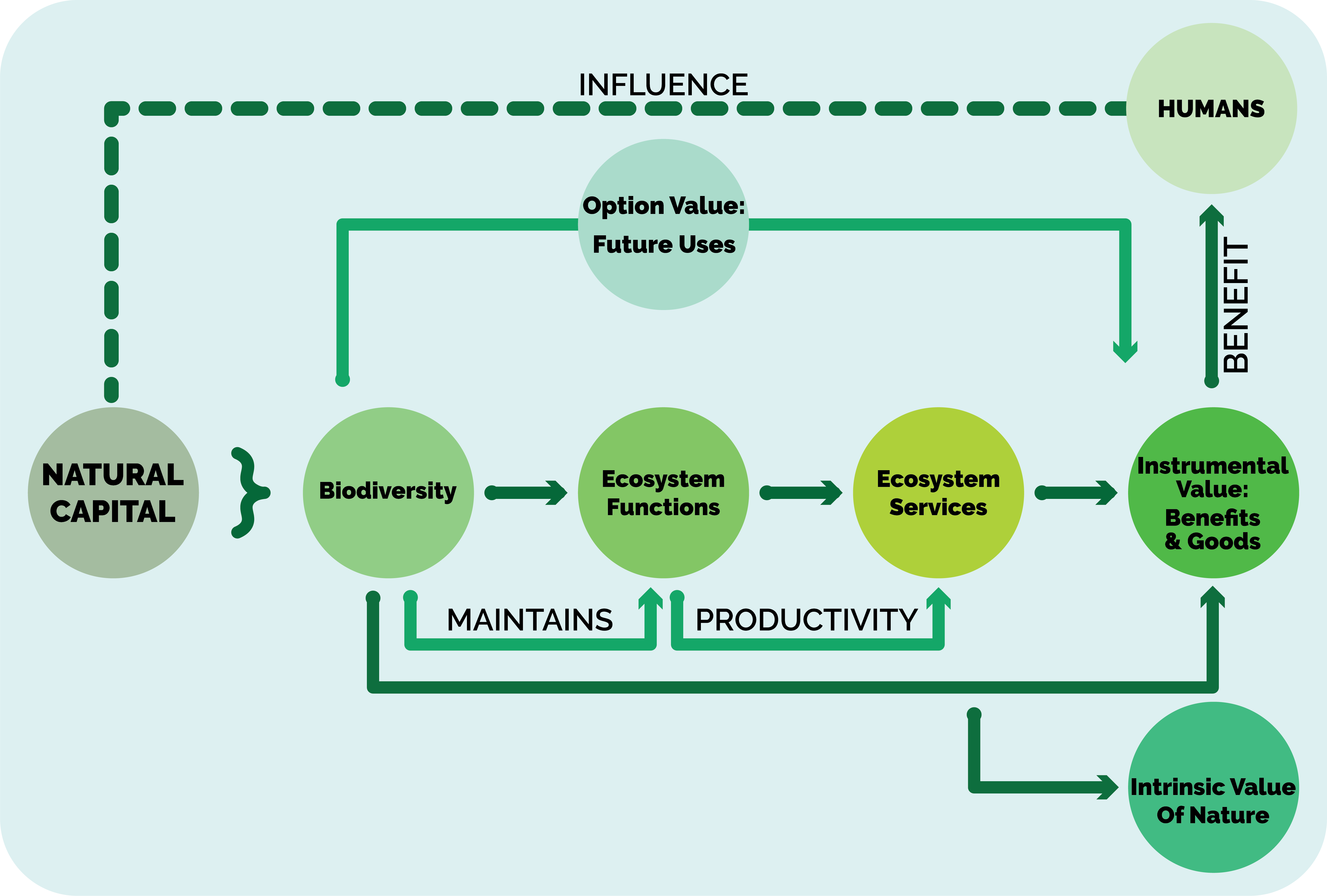
Background
Natural capital assessments aim to understand, measure and value human interdependencies on nature, later using the results for sustainable management of the planet’s resources. Natural capital originates from neoclassical economics. “Capital” is a stock that can produce ongoing goods or services to human society. Natural capital is the global stock of natural resources- composed of abiotic and biotic elements of the natural environment. Natural capital is frequently combined with human inputs to generate flows of ecosystem services that are beneficial to society.
Fig 1: the relationships between natural capital, ecosystem functions and ecosystem services.
There is frequently confusion between the definitions of natural capital and ecosystem services. Although they are closed relatedly, these two concepts are different entities. If we solely concentrate on the valuation of ecosystem services (i.e. the flow of benefits), natural capital (i.e. the stock of natural resources) could be continually degraded or depleted. Hence, a temporary increase in ecosystem services provision can lead to a decrease in natural capital. This is unsustainable in the long term because the natural capital asset cannot be renewed, and ecosystem services provision will eventually cease.
The Cambridge Conservation Initiative (CCI) has formed a Working Group of representatives from select partner organisations, leading a suite of work to place missing biodiversity values at the heart of natural capital accounting. These partners represent the University of Cambridge, IUCN, UNEP-WCMC, RSPB, Birdlife International, FFI and CISL.
The largest project in the suite is a partnership with the Natural Capital Coalition to produce a framework for natural capital assessment aimed at business users. Our project aims to adapt and operationalise the framework of the Working Group at site-scale using the Toolkit for Ecosystem Services Site-based Assessment (TESSA) to provide conservation practitioners and land managers with a tool to assess natural capital assets. TESSA was developed by the TESSA Steering Committee (University of Cambridge, Birdlife International, RSPB, Tropical Biology Association, University of Anglia Ruskin, University of Southampton, and UNEP-WCMC).
Aims of the project
The project aims to integrate natural capital assessment within TESSA. Wewill develop a methodology that assesses natural capital at a specific site of interest, forming an asset register reviewing the extent and condition of natural capital assets. Although the value of natural capital can be depicted in monetary terms, it can also be depicted in quantitative or qualitative terms. The value of something is simply the relative importance of something. This project does not attribute economic values to the natural capital assets. An asset register provides information on the health of natural capital assets at a site and the site’s capacity to provide flows of benefits to society (i.e. ecosystem services) sustainably.
Before compiling an asset register for natural capital, the management goals for the landscape must be carefully considered. What kind of benefits or ecosystem services do we require or want from the landscape? After this, the following steps should be taken to compile an asset register:
-
Define an operational definition of natural capital
-
Provide a classification system for natural capital assets
-
Compile a list of natural assets and assess their quantity
-
Where do the natural assets reside (i.e. location)?
-
What are the conditions of the natural asset (i.e. quality)?
We will develop a comprehensive methodology and/or tool that will be first piloted at a key site in the UK. The most important criteria for site selection are twofold: 1) where an ecosystem services’ assessment has been conducted and data are available; 2) the partner at the site is known to provide great support to access the site and invaluable information.
Wicken Fen National Nature Reserve fulfils these two main criteria as a robust TESSA study was conducted in 2011 with the National Trust as a key collaborator and published as Peh et al., 2014. Therefore, Wicken Fen has been selected as the key pilot site for developing the methodology for natural capital asset assessment at site level. The ultimate project goal is to link the flows of benefits from ecosystem services to the underlying natural capital stocks delivering those flows.
Team Members:
-
University of Cambridge: Yuan Pan, Bhaskar Vira, Andrew Balmford
-
Birdlife International: Anne-Sophie Pellier, Stuart Butchart
-
RSPB: Richard Bradbury, Katharine Bolt, Michael MacDonald
-
Tropical Biology Association: Rosie Tevelyan
-
University of Anglia Ruskin: Francine Hughes
-
University of Southampton: Kelvin Peh
-
UNEP-WCMC: Lisa Ingwall-King

